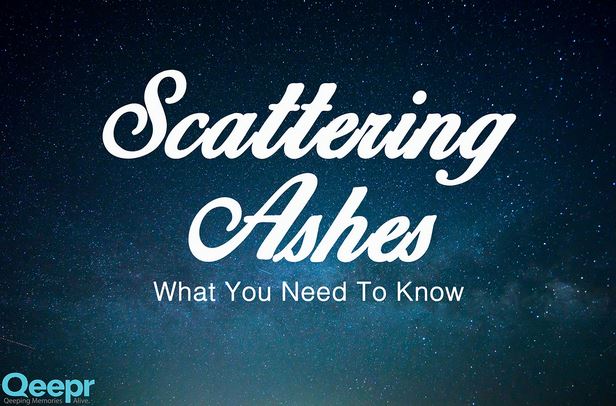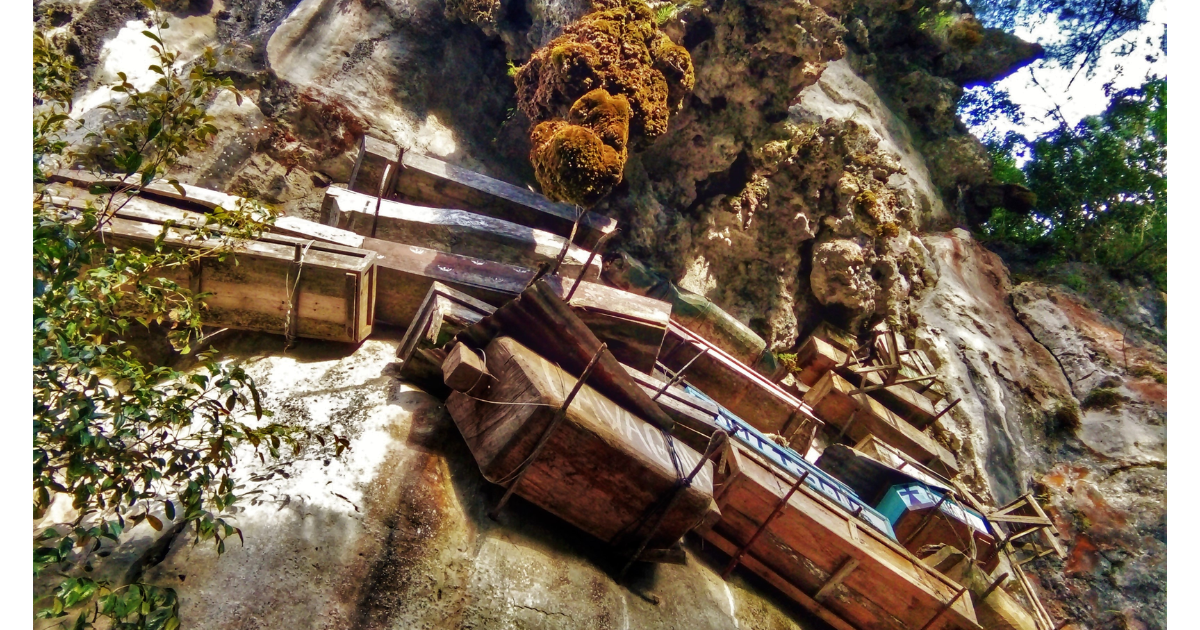Scattering Ashes: What You Need to Know
Article originally appeared on Qeepr
Cremation rates in North America are skyrocketing. Before the 20th century, no one was cremated; an act that was seriously frowned upon by the Church. Today rates of cremation are around 40% in the United States and 68% in Canada. These numbers are expected to rise to above 60% in the United States in the next 20 years. More and more people are opting to cremate their remains, but what to do once you have possession of your loved one’s ashes?
People choose to cremate for many reasons and what they choose to do with those cremains are just as personal. Ashes can be buried in cemeteries, kept in mausoleums, put in an urn and left in the home or scattered in various locations. Scattering remains has grown in popularity over the past several decades, alongside a rise in popularity of the destination scattering. John loved Bermuda? Why not release him in the ocean? Alisha loved the Yankees? Spread her ashes inside Yankee Stadium. So whether it’s trenching, ocean scattering or being shot into space: here is everything you need to know about letting go of cremated remains.
What You Need To Know
Scattering:
As Caitlin Doughty explains in this YouTube video, not all scatterings are legal or recommended. Some baseball fans, for example, have had their ashes spread or released by family members inside stadiums across the country. Not only is this not sanctioned by the MLB, it can be quite illegal since it is on private property. It also raises interesting questions of place and memory, when stadiums are later torn down. Likewise, a beach scattering may be legal or illegal depending on your location. A family soaking in the sun might not be pleased to discover themselves covered in the cremains of grandpa. Ocean scatterings must be legally done 3 miles off shore and in water at least 600 feet deep.
In the end, most States and Provinces follow a “don’t ask, don’t tell” policy to scatterings. There are few strict laws regulating the practice but common sense and decency should prevail. For a detailed list of State and Federal cremation and scattering laws and practices look click here.
Flying:
Another aspect to consider is how to travel with your loved one’s ashes. Many airlines allow cremains onto a flight as carry-on, although you should always call and double check with your airline at least 7 days prior to travel. You may want to avoid checking in cremains on the off chance an airline loses your luggage.
- You will want to make sure to arrive at the airport early to deal with security issues
- Carry a death certificate with you
- Carry ashes in an urn that can withstand turbulance
- Make sure your urn is TSA safe and able to be viewed in an X-Ray machine. You will not allowed onto the flight otherwise. Wood, glass or plastic should be fine
- Many funeral homes sell travel urns for this purpose
If you would rather avoid the hassle of personally flying with cremains, you can always send them as cargo. The United States Postal service and Canada Post have special containers to carry ashes and follow special procedures. Call your local post-office to enquire and please make sure to provide the correct mailing address!
Visit the TSA website for more guidelines. The Cremation Association of North America has more handy tips on their website.

Photo by Bradly Boner via www.dogblog.ruffwear.net/
Traditional Scattering
Traditionally ashes are spread using two separate methods: trenching and raking. Trenching is the act of digging a hole, placing the cremains inside and covering it over with dirt. The cremains can be placed as is or put inside an urn. There are green-burial options today including biodegradable urns and urns that turn cremains into your loved one’s favorite tree. For beach scatterings, you can make a trench leading into the water, cover the cremains with sand and let the water wash them away. Raking is the act of scattering cremains in a garden, sand or plot of land and raking them to incorporate them into the ground. Please check ahead of time if you want to rake cremains in a public location, such as a park, as it may not be legal. Both options can be opportunities for various people to come together to participate and pay their final respects.
Alternative Scatterings

Want to get high after your death? Well lucky for you, whether its being shot into space, sent to the moon or released into the atmosphere, there are a few options available. For 1300$, Celestis Memorial Spaceflightswill send cremains into space and back down to earth. For a more permanent trajectory, and 12,500$, they will land your loved one’s cremains on the moon or send them off into deep, deep space. Elysium is another company offering to send your ashes to the moon. They launch their missions alongside bigger missions from NASA and other space agencies. Prefer to keep cremains on earth? Heavenly Star Fireworks will pack cremains into a special container and launch them as roman candle fireworks! Finally, Mesoloft‘s unique offering carries ashes in their speciality balloons and releases them in the outer atmosphere, allowing cremains to be carried by the wind and turned into nourishing water molecules.

If scattering ashes is not for you, LifeGem may have a solution. LifeGem are a diamond company that create lasting memorials using your loved one’s cremains. Their machines turn the carbon in ashes into wearable jewelry. One final memorial option is brought to you by Eternal Reefs, a company which will turn cremains into a living ocean reef. Their reef balls remain fixed to the ocean floor and become vital habitat for marine life.
| Click to See 23 More Remarkable Things to Do with Ashes |
Remember, there is nothing wrong with storing ashes at home. Alongside our societies desire to overcome grief as quickly as possible, the storing of ashes for long periods of time is often looked down upon. Never feel like you MUST do something with the ashes. Some people may also prefer to scatter only a portion of their loved one’s cremains. If this seems more appropriate to you, Tré Miller Rodríguez on modernloss.comwrites that the best way to scatter ashes in small amounts is to use both a friend and a Ziplock bag:
The reality of what you are doing may trigger strong emotions, so it’s smart to have a pal who can either take over the transfer or support you through the process.
More than moral support, a friend will help you avoid any mishaps and spilled ashes.
If you are unsure about your cremation and scattering options, remember that your local funeral home or cemetery may have all the answers for you. Likewise, feel free to call your local city officials if scattering on public land.
For more memorialization options and strange death rituals, you can look at our list of the Top 10 New Funeral Trends & Funeral Traditions Around the World.




